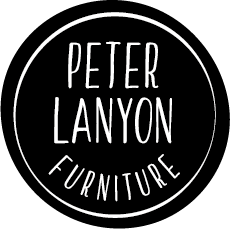How to use a Shave Horse.
A shave horse is the backbone of most green woodworking projects, and is often the starting point for the furniture we make. It is essentially a quick-release vice which makes repositioning material very quick, as you work around a rough wooden “blank”. This means you can quickly turn wooden “billets” into beautiful, hand-worked components.
Although the shave horse can be used on dry timber, it is most commonly used with unseasoned wood, which is split, or “cleaved” down into billets. Unseasoned wood cleaves well, following the grain, unlike kiln-dried, or old wood which becomes brittle, and cracks in unpredictable ways.
Shave horses are commonly used for making wooden spoons and components for chairs and other furniture. They are also used for making thatching spars, gates, post and rail fencing etc.
It is generally used in conjunction with a two-handed knife, called a draw-knife, or a spokeshave. Unusually, a draw-knife is the one knife you always use cutting towards yourself - as you need both hands to hold it there is no way of injuring yourself.
As you are in a seated position, it is very comfortable to use, and it is possible to spend hours on a shave horse, absorbed by the meditative process of refining wooden components. Shaving wood produces no dust. It can be done outside. It provides a gentle workout for the whole body. People on my courses often describe their time on a shave horse as therapeutic.
One of the real joys of it for me, is how the drawknife, with a little practice, will follow the grain in a piece of wood, so no two components are the same. A curved branch, when split along the grain, then refined with a drawknife, is a collaboration between wood and craftsperson. Nuances in grain, as for example when it sweeps around a knot in the wood, are to be celebrated, not straightenend out. Is the world not already full enough of flat, square surfaces, devoid of any trace of human touch?
Our Wishbone Bench really celebrates the natural curves to be found when splitting and shaving wood. The front legs, uprights, and back rest were all cleaved out of one stem.
If you want to try making furniture with a shave horse and draw-knife I’d really recommend coming on a course - my Introduction to Green Wood Furniture Making is a great way to learn proper technique, or a longer course will give you even more time to hone those skills.
My shave horse design folds away neatly and can be stored flat against a wall, so it takes up very little room. i sell it in kit and assembled form, and also periodically run shave horse courses to make them in my workshop.
Here is a short video of how to set up my own design of shave horse, which i sell in kit form, or fully assembled and ready to use.
Children of all ages love shaving wood - children featured heavily in my own career in green woodworking. If you have small children then consider buying the child extension, which enables very small people to get started splitting and shaving.
My daughter, many years go, using her first draw-knife, and demonstrating correct use of the child extension.

